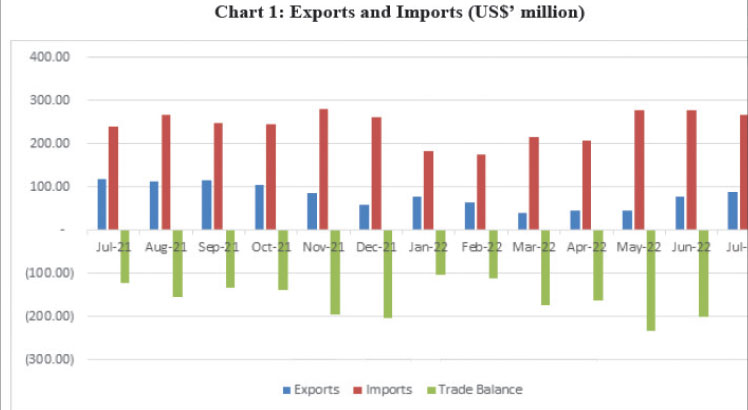Trade balance worsens in Q2
Malawi’s merchandise trade balance worsened in the second quarter (Q2) of this year to $593.5 million (K538.9 billion) from $388.2 million (K320.6 billion) recorded in the previous quarter, Reserve Bank of Malawi (RBM) figures show.
The report, a quarterly publication prepared by the RBM containing major economic highlights in a given period, shows that the narrow trade deficit was due to a $14.3 million (K5.7 billion) decline in exports in the period.
According to the report, exports rose to $168.7 million (K156.1 billion), which was further worsened by a $191 million (K224 billion) increase in imports to $762.2 million (K695.1 billion) during the review quarter.

Reads the report: “The decline in exports mainly followed a $26.9 million (K18.9 billion) decrease in tobacco exports to $27.7 million (K26 billion) during the review quarter from $54.7 million (K44.9 billion) exported in the first quarter of this year.
“On the other hand, the performance of imports during the review quarter was explained by an increase in the importation of fuels, pharmaceuticals, fertilisers and vehicles of $76.5 million (K80.9 billion), $20.9 million (K21.9 billion), $7.5 million (K12.5 billion) and $4.5 million (K7.2 billion) during the quarter under review
Malawi’s export basket continues to be highly dominated by agricultural products with tobacco alone claiming about 40 percent.
Sugar and coffee exports claimed second and third slots respectively, with 10 percent share of total exports, implying that a basket of the three agricultural products accounted for 60 percent of Malawi’s export products.
In terms of imports, the available data shows that fuel and fertiliser remained Malawi’s main import products.
Malawi’s wide trade deficit—the difference between imports and exports—has been a norm where imports outweigh exports despite the country having various trade policy interventions to narrow the gap.
But having launched the National Export Strategy II (NES II)(2021 – 2026), the government through the Ministry of Trade expects an outturn of such dominance and consequently an improved trade balance.
Government is upbeat that through implementation of the (NES II) which is anchored on industrial development through manufacturing of value-added products for exports, Malawi’s trade balance will improve.
Said the report: “The strategy will contribute to Malawi 2063 through income generation and job creation and will help Malawi exploit opportunities that have remained untapped for a long time in the various bilateral, regional, and multilateral trade agreements that we are party to.
“The target is to increase exports as a percentage of Gross Domestic Product (GDP) from 14.6 percent to 20 percent, which requires Malawi to double its exports to achieve an annual export growth of 5.6 percent.”
Ministry of Trade spokesperson Mayeso Msokera is on record as having said that trade balance has become an issue of concern but the government continues to implement policies and strategies to narrow the trade gap.





